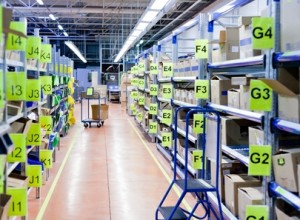Minimize Cost and Maximize Customer Service
Cost Saving Ideas in the Warehouse
In today’s world of constantly looking for ways to improve the company’s bottom line, many operations are being asked to reduce costs, or better yet, increase productivity and efficiency and lower cost at the same time. Here are some ideas and practices to minimize cost in the warehouse.
Backorders: Analyze backorder and improve the accuracy of inventory forecasting.
One of the top customer inquiries and complaints is “Where is my backorder?” The backorder not only costs customer service the time to answer the inquiry, it also costs to ship the product once it arrives in the distribution center. With the cost of a backorder ranging from $7-$12 per order unit of merchandise, it doesn’t take long for them to add up and those costs come right off the bottom line. Customer order fill rate should be reviewed and improved without being out of stock or overstocked.
EXAMPLE: A typical catalog with a 20% backorder rate averaging two items per order processed 200,000 orders for a total of 400,000 units of merchandise. Calculated at 20%, 40,000 customer orders had backorders. Estimating backorder cost on the low end at $7.37 per order, the catalog will have to absorb $294,800 to make up for backorders.
Slotting: Implement an ongoing program of determining the correct picking slot locations.
An ongoing program for determining the correct picking slot locations is a must. Consideration should be given to product velocity (sales) and size (cube) in placing it in the pick line. Having as a goal the storage of at least one weeks average unit movement in the pick slot along with providing a variety of slot sizes should be a key focus.
Picking Processes: Maximize picking efficiencies.
There are many picking methods used in the DC from batch picking, zone picking, pick and pass, pick to cart and pick to box, just to name a few!
- Analyze the type of product and the type of orders (single vs multi), the most efficient pick path processing can be created reducing travel time.
- Separating fast movers from slow movers.
- Establish a “Hot Pick” area for extremely fast movers.
Packing: Reorganize to get shipments out the door quickly and accurately. Packing rates average 35 to 40 per hour.
- If you are not doing pick to box, does your system have the capability to determine the box size for the packer?
- Is the pack station clean, neat and ergonomically setup?
- Is the appropriate dunnage inserted into each box?
- Where is the pack verify performed?
These are just a few questions to look at when analyzing the pack area. Remember, presentation to the customer is as important as getting the shipment out of the door quickly.
Inbound Freight: One of the most overlooked areas for significant cost reduction!
Inbound freight is one of the most overlooked areas for significant cost reduction in many companies. Multi-channel companies often spend from 2%-4% of gross sales on inbound freight. Most successful companies who have paid attention to inbound freight view inbound freight management as controlling inventory in transit. Most have been proactive and conducted inbound freight analysis. Since inventory is, in many cases, your largest asset, the management of this asset is critical to your business success.
There is a growing trend to use freight collect rather than prepaid freight. Inbound freight should be bid out competitively often. Tracking receipts and scheduling frees up the dockyard and provides the opportunity to schedule receiving personnel when needed.
Outbound Freight:
One of the largest expense items that is always a primary target for cost reduction is outbound freight. With shipping carrier increases in the range of 3%-5% annually. In a typical catalogue company, outbound freight ranges 8%-12% of net sales. Competitively bid out often to ensure the best pricing. Combining inbound and outbound freight with one carrier may produce savings.
Replenishment: Insure sufficient product is available.
Insuring that sufficient product is available when the picker needs it ranks as one of the most common warehousing rules that is frequently broken. A combination of scheduled replenishment of the primary pick slot using the min-max and demand replenishment concepts should be employed to increase the likelihood that product is available when needed. If product is not available for the picker, the order is set aside for resolution. This creates inefficient productivity.
Benchmarking KPI’s: You can’t improve activities which have not been measured.
Benchmark, benchmark, benchmark. The best indication of how your operations is performing is through benchmarking. By developing a set of consistent and measurable Key Performance Indicators (KPI’s), you can measure your costs, productivity and efficiency. Once you’ve completed and analyzed your existing operation through a warehouse assessment and benchmarking study you will want to compare yourself to accepted industry benchmarks. You want to avoid using general industry averages as those won’t be specific to your business in product type, size and customers.
